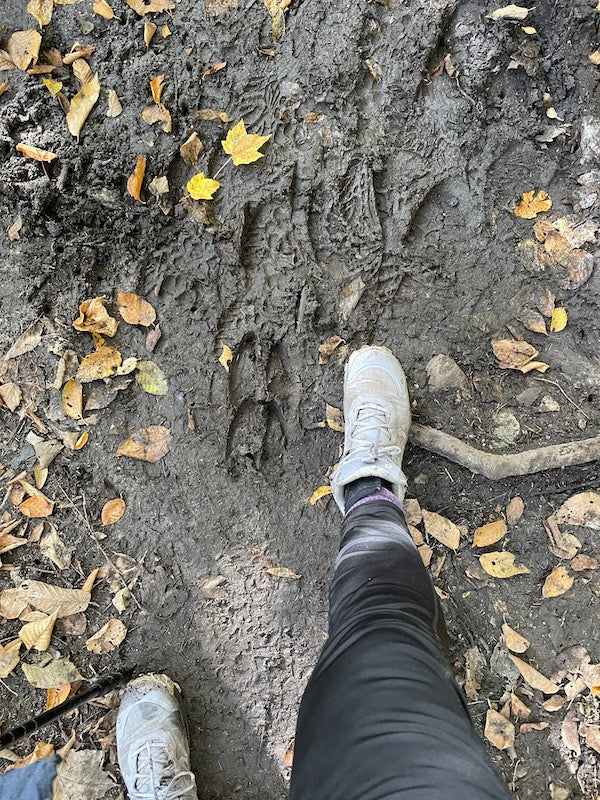
So You Want to Hike Without Advil?
We love a good summit, but not the ibuprofen hangover that follows. If you’re here, you’re probably tired of relying on over-the-counter meds to get through sore knees, stiff shoulders, or that post-hike “I might never move again” feeling.
You’re not alone—and you’re not out of options. Herbal alternatives exist, and yes: they actually work.
As a longtime hiker and herbalist (who’s definitely cried into her boots after a downhill quad-burner), here are the natural remedies I carry instead of a pill bottle.
🔥 1. Arnica: The Gold Standard for Pain & Bruising
Why it works: Arnica reduces inflammation, eases muscle pain, and helps speed recovery after overexertion.
How to use it:
-
Apply arnica salve to sore muscles or bruises
-
Take homeopathic arnica pellets after intense hikes
💚 Pro tip: Rub into quads and calves post-hike before bed = hiking again tomorrow is actually possible.
🌱 2. Cayenne: Warming Circulation Support
Why it works: Cayenne boosts circulation and helps reduce pain by gently stimulating blood flow to sore areas.
How to use it:
-
Use a warming liniment or salve with cayenne in it
-
Never apply to broken skin (ouch)
🔥 Great for creaky joints, cold toes, and "I can't feel my knees" days.
🍬 3. Ginger: Anti-Inflammatory and Digestive MVP
Why it works: Ginger is a powerhouse anti-inflammatory that also eases nausea, bloating, and trail belly.
How to use it:
-
Sip ginger tea
-
Carry ginger chews
-
Add slices to your water bottle
🫖 Bonus: Ginger + peppermint = your new favorite trailhead hydration blend.
🌼 4. Chamomile: The Sneaky Sore-Muscle Soother
Why it works: Most people think chamomile is just for sleep, but it’s also a gentle anti-inflammatory and muscle relaxant.
How to use it:
-
Drink as a post-hike tea
-
Use topically in bath soaks or salves
-
Combine with tulsi for a chill-but-functional blend
💤 Also helps with trail anxiety, tension, and “oh no I heard a bear” stress.
🌿 5. Turmeric: Long-Term Joint & Inflammation Support
Why it works: Turmeric helps reduce systemic inflammation and supports joint health over time.
How to use it:
-
In capsules or tinctures before and after hiking
-
Combine with black pepper for better absorption
⚠️ Not a quick fix—but a solid long-haul support herb for serious hikers.
🧪 Quick Comparison: Advil vs. Herbal Alternatives
| Issue | Advil | Herbal Alternative |
|---|---|---|
| Muscle pain | ✅ | ✅ Arnica, Cayenne |
| Joint stiffness | ✅ | ✅ Turmeric, Cayenne |
| Inflammation | ✅ | ✅ Ginger, Turmeric |
| Headache | ✅ | ✅ Peppermint, Chamomile |
| Gut safety | 🚫 | ✅ Ginger, Chamomile |
| Long-term use | 🚫 | ✅ Yes, with balance |
🧭 But Do They Really Work?
Short answer: yes—but differently. Herbs support your body’s own healing processes, rather than shutting down the pain signal. They may take longer, but the results are often deeper, longer-lasting, and easier on your gut.
If you're hiking regularly (or want to), it's worth building up your herbal trail kit.
📦 Want a Shortcut?
I handcraft and deliver these exact remedies (plus more!) in the Hiker’s Apothecary subscription box—designed for women who hike for sanity, strength, and connection.
Each box includes:
-
Herbal salves & muscle rubs
-
Bug spray that actually works
-
Trail-tested tinctures
-
Tea blends for recovery
-
And a little plant magic
👉 Check out what’s inside the box
🥾 Before You Pop Another Pill…
Try something different. Try plants.
Your knees (and your liver) will thank you.
